 You might have heard about “natural” or “conservative” treatment options for your peripheral arterial disease (PAD) – and you might wonder what those terms mean and if they would work for you. After all, we would all like to avoid more aggressive medical treatments whenever we can, right?
You might have heard about “natural” or “conservative” treatment options for your peripheral arterial disease (PAD) – and you might wonder what those terms mean and if they would work for you. After all, we would all like to avoid more aggressive medical treatments whenever we can, right?
All PAD treatment options have the goal of controlling negative symptoms. At the same time, they try to slow the progression of the disease so that it doesn’t get any worse.
Some of these treatment options – called “conservative” or “natural” treatments – try to control symptoms through changes in your diet, exercise, and lifestyle. In other words, they involve as little direct medical intervention as possible. These natural treatment options do work for many patients, allowing them to reduce or eliminate the symptoms of their disease. They often help to stop the buildup of arterial plaque that narrows their arteries and causes the disease in the first place.
However, for other patients, more aggressive treatments are needed. These patients tend to either have more serious symptoms when they are first diagnosed with peripheral arterial disease, or they develop them later. The treatment options for these patients aim at physically removing the blockages to the arteries. These treatment options include minimally-invasive endovascular procedures such as balloon angioplasty, stent placement, or atherectomy.
So what determines which options are best for you, to most successfully treat your PAD? In this article, the best peripheral arterial disease specialists in Phoenix explain what we look at when we make a treatment recommendation.
The first question, of course, is “What are your symptoms?”
When a patient approaches us or is referred to us, we take the time to learn their medical history and do a focused examination. Our aim is to determine the best non-invasive study to be able to diagnose the problem as efficiently as possible. Many people with PAD have no symptoms at all. Others experience mild symptoms such as leg pain (claudication) and impaired mobility. Still others can have very strong symptoms that require more extensive treatment. These symptoms include leg pain that doesn’t stop even when at rest, sores on the legs and feet that don’t heal, or areas of coldness or numbness in the lower extremities.
If your PAD symptoms fall into the last category, they may indicate that you have or are in danger of developing critical ischemia (CI). This is a life-threatening condition that needs to be treated immediately, and aggressively. Advanced cases of PAD such as this can cause gangrene. If we don’t catch them in time, the result can be amputation. These advanced cases can also cause sepsis. Sepsis is a form of infection in which the body starts attacking its own tissues and organs. In severe cases like this, we would NOT recommend conservative treatment. What is needed is immediate intervention, before the disease becomes life-threatening.
Most of the time, however, we try to start with natural treatment
We will give you diet and exercise recommendations that will help you change your lifestyle. These lifestyle changes can help to minimize the impact that PAD is having on your circulation and your overall health. We can also help you to stop smoking, if needed. Quitting smoking alone will improve your vascular health. If you have high blood pressure, high blood cholesterol levels, or high blood sugar, we can treat these risk factors with medication. The medications help to control these risk factors so that they aren’t making your PAD any worse.
The next step in this natural treatment – and the most important – is to perform regular follow-up tests to see if natural treatment is working. If it is, and your symptoms are improving, that’s a good sign. If they’re getting better, we may decide that more aggressive treatment is not needed at this time. You can safely continue with the natural treatment. If your symptoms DON’T get better, however, or if tests indicate that the blockages are getting worse, we may recommend endovascular treatment.
One factor that can make conservative treatment NOT a good choice for you
Conservative treatment of PAD can work wonders, and quickly bring the disease under control. There is one problem with these lifestyle changes, however. You actually have to follow the recommendations before they work.
One of the reasons that supervised exercise programs are more successful at treating PAD than “exercising at home, on your own,” is that people don’t usually exercise at home on their own. Or they don’t exercise regularly enough for it to have any effect. Exercising with others can be more motivating. And even though quitting smoking is one of the most effective things people can do to treat their PAD, a lot of people find it too hard quit on their own and need additional help.
So, when considering whether natural or conservative treatment is a “good fit” for you, try to be honest with yourself as to whether you would actually follow the dietary, exercise, and lifestyle recommendations this treatment involves. If you suspect that you wouldn’t, natural treatment might not be the best option for you.
We can help you decide, and help you follow through. That, after all, is our job. We provide the best peripheral arterial disease treatment in Arizona, and we’re proud of our ability to do so. So give us a call at 888-377-7122 and let us help you find the best PAD treatment option, the one that is most likely to be successful for you.
